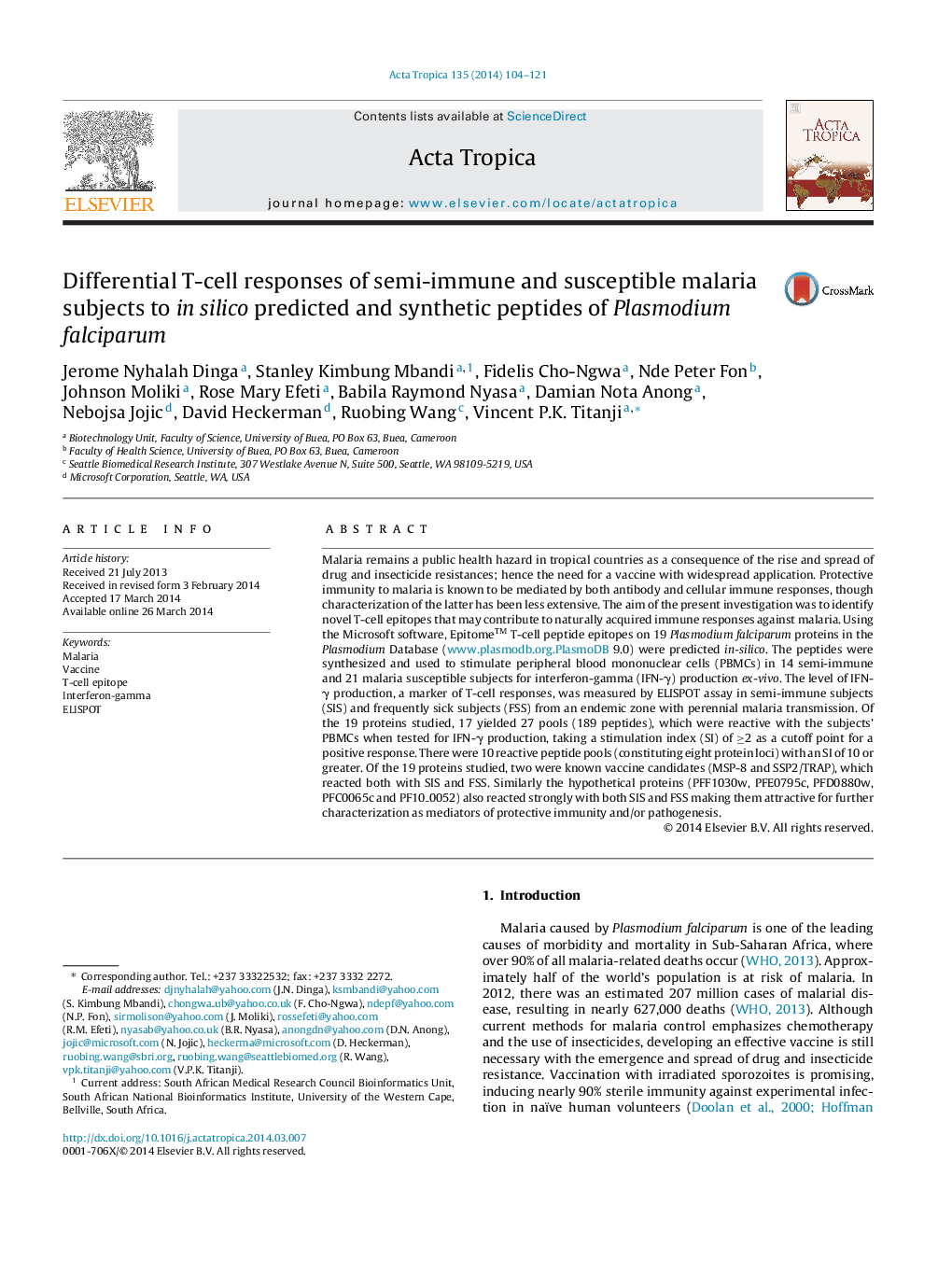| کد مقاله | کد نشریه | سال انتشار | مقاله انگلیسی | نسخه تمام متن |
|---|---|---|---|---|
| 3393837 | 1592788 | 2014 | 18 صفحه PDF | دانلود رایگان |

• The study aimed at identifying new P.falciparum T-cell epitopes.
• One hundred eighty nine predicted synthetic T-cell peptide epitopes were tested as T-cell stimulators.
• Five new protein markers of malaria immunity/pathogenesis were identified.
Malaria remains a public health hazard in tropical countries as a consequence of the rise and spread of drug and insecticide resistances; hence the need for a vaccine with widespread application. Protective immunity to malaria is known to be mediated by both antibody and cellular immune responses, though characterization of the latter has been less extensive. The aim of the present investigation was to identify novel T-cell epitopes that may contribute to naturally acquired immune responses against malaria. Using the Microsoft software, Epitome™ T-cell peptide epitopes on 19 Plasmodium falciparum proteins in the Plasmodium Database (www.plasmodb.org.PlasmoDB 9.0) were predicted in-silico. The peptides were synthesized and used to stimulate peripheral blood mononuclear cells (PBMCs) in 14 semi-immune and 21 malaria susceptible subjects for interferon-gamma (IFN-γ) production ex-vivo. The level of IFN-γ production, a marker of T-cell responses, was measured by ELISPOT assay in semi-immune subjects (SIS) and frequently sick subjects (FSS) from an endemic zone with perennial malaria transmission. Of the 19 proteins studied, 17 yielded 27 pools (189 peptides), which were reactive with the subjects’ PBMCs when tested for IFN-γ production, taking a stimulation index (SI) of ≥2 as a cutoff point for a positive response. There were 10 reactive peptide pools (constituting eight protein loci) with an SI of 10 or greater. Of the 19 proteins studied, two were known vaccine candidates (MSP-8 and SSP2/TRAP), which reacted both with SIS and FSS. Similarly the hypothetical proteins (PFF1030w, PFE0795c, PFD0880w, PFC0065c and PF10_0052) also reacted strongly with both SIS and FSS making them attractive for further characterization as mediators of protective immunity and/or pathogenesis.
Figure optionsDownload as PowerPoint slide
Journal: Acta Tropica - Volume 135, July 2014, Pages 104–121